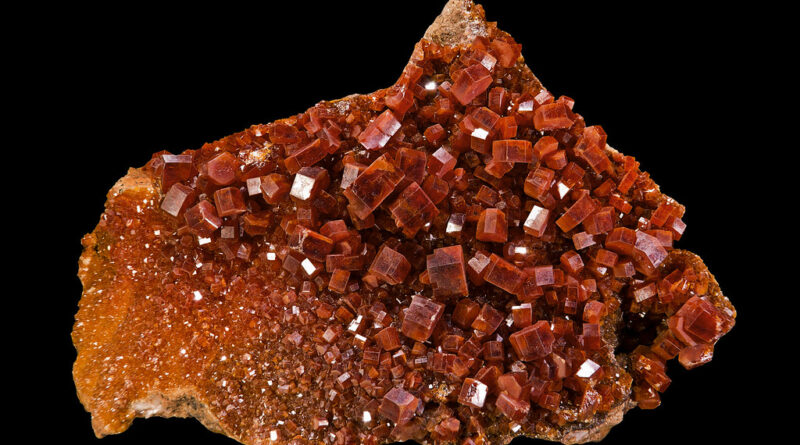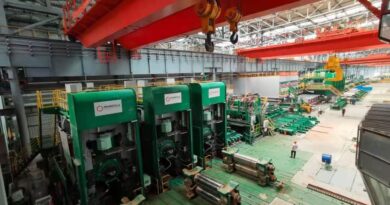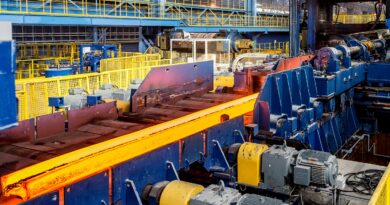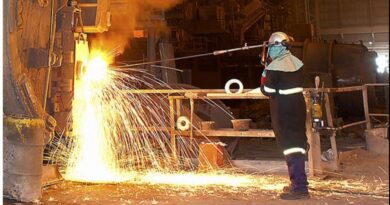Vision Blue to invest in vanadium mining and processing company
Vision Blue Resources has announced that it led an investment of up to US$12.6m in FAR, a vanadium mining and processing company listed on the Main Market of the London Stock Exchange with operations based in Southern Kazakhstan.
FAR is developing the very large Balasausqandiq Vanadium project (“Balausa Project”) which benefits from access to excellent existing power and logistics infrastructure and has the potential to become the lowest cost producer of vanadium globally.
VBR will make an initial investment of up to US$3.1m alongside a limited number of co-investors including Tony Trahar, former CEO of Anglo American plc and a former Director of Highveld Steel and Vanadium – which was at one point in time the largest producer of vanadium in the world.
This Initial Investment will be made in two stages. Following the Initial Investment VBR has the right to make a further investment of up to US$9.5m, resulting in a total investment by VBR of US$11.5m.
Sir Mick Davis said: “This is Vision Blue’s second investment following launch last month and clearly illustrates how we are rapidly building momentum. The Ferro Alloy Resources investment case is compelling, has an attractive risk profile and many qualities that are difficult to find in other mining investment opportunities. We believe that the Balausa Project has the potential to become the lowest cost producer of vanadium globally and to deliver highly attractive returns to its shareholders. This long-life asset benefits from access to excellent existing power and logistics infrastructure and has clear potential to achieve net-negative cash production costs – a unique quality in this industry.
“The strong investment case for vanadium is clear not only from a steel demand perspective, but even more when considering the huge potential for vanadium redox batteries to play an integral role in the establishment of reliable ‘base-load’ renewable energy, capable of reducing the world’s reliance on fossil fuels. The Balausa Project is especially attractive in this respect given its production cost profile and the team’s conservative long term price assumptions.
“There are multiple near-term catalysts for the Company and I expect to see significant progress in the coming months. Details of the investment Pursuant to a subscription agreement entered into between the FAR, VBR, and the Co-Investors, the Initial Investment of US$3.1m will be made through the purchase of 11,971,463 new ordinary shares in FAR at a price of 9 pence per Share and the issuance of US$1.6 million of convertible loan notes (“CLN”), following the completion of certain legal formalities together with a formal legal confirmation. A further 12,769,558 Shares would be issued to VBR at the Issue Price when the notes are converted. FAR has also granted VBR the right to make the Further Investment of up to US$9.5m at the Issue Price through the extension of the CLN or issuance of Shares by FAR.
Up to US$7.0m, within three months of completing the upfront investment and the receipt of certain consents in Kazakhstan, and up to US$2.5m within three months of the completion of the Company’s updated Feasibility Study.
The Initial Investment will allow FAR and VBR to ensure that the Company has sufficient capital to progress critical near term workstreams including further expansion and improvements to the Company’s existing operations as well as fully funding the completion of the Balausa Project feasibility study. In addition to the Initial Investment and Further Investment, VBR will retain the right to invest up to a further US$30m in FAR based on pre-agreed valuations for the Company.
These rights will only be triggered in the event that FAR launches a process to raise capital for the construction of the Balausa Project and where the Initial Investment and the Further Investment have been exercised.
Vision Blue Resources and FAR have also agreed to conduct an evaluation process to identify and seek to recruit additional members of the management team to ensure that FAR has the necessary skills to take the Balausa Project into production following completion of the Feasibility Study.
The Balausa Project is unlike most other primary vanadium deposits as it is amenable to a processing method that is much lower in both capital and operating costs. The deposit has not been fully explored but FAR believes that the Balausa Project could support an operation of up to 10 Mtpa of ore, producing about 55,000 tonnes of vanadium pentoxide per year.
FAR has already completed the first steps of a development plan for its existing operation which is expected to result in annualised production capacity increasing gradually to around 1,500 tonnes of saleable vanadium product.
The development plan includes upgrades to infrastructure, an extension to the existing factory and the installation of equipment to increase the throughput and to add the facilities to convert AMV into vanadium pentoxide.
FAR’s strategy is to develop its existing profitable operations and the Balausa Project in parallel. Although they are located on the same site and use some of the same infrastructure, they are separate operations.




